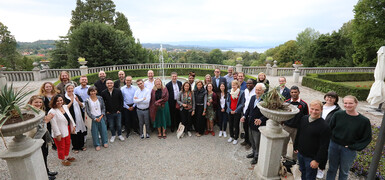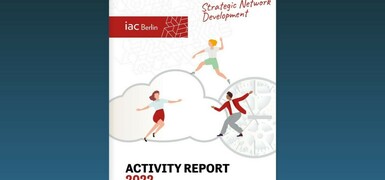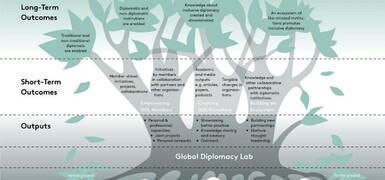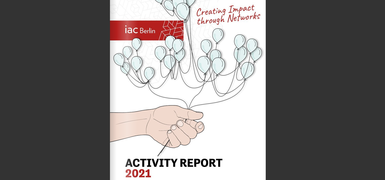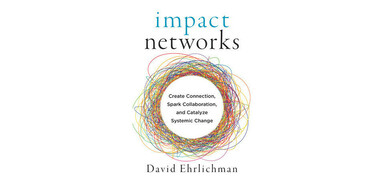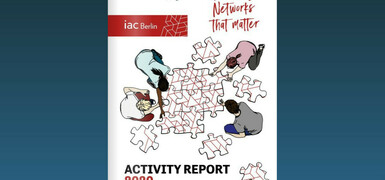
Global Networks: Strategies and Shared Learning
Results of the Wasan Island Retreat on Global Networks in August 2017
Considering the complex nature of today’s global challenges, solutions need to be reactive to an ever-evolving landscape of players and circumstances. Networks are a fitting way to approachthis complex challenge and if well-managed, networks help us share and use knowledge across sectors and geographical boundaries.
Nevertheless, networks can also inadvertently become echo chambers that reproduce societal silos of like-minded people and mindsets, insulated from important challenges to their thinking and knowledge. Like many positive change phenomena, they have a “shadow side”that needs to be anticipated, understood and mitigated.
When talking about generative networks, we have in mind networks that contribute to a positive social change.
These networks:
- are future oriented, solutions-focused and have a long-term outlook.
- align the efforts of individuals and institutions to increase impact and strive for systems change.
- reinforce the participants’ motivations to be active contributors.
- enable ongoing communication and learning to deepen insight and knowledge.
- are cognizant of the emergent character of the knowledge required to achieve their system-level goals.
- reflect the values of openness and transparency, reciprocity and sharing.
- manage a creative tension between distributed power and insightful servant-leadership offered by their support platforms.
- are ethically grounded in support of enhancing public goods.
Impactful - or generative - networks are centered around three areas of questions and insights
1. What infrastructure can support the development of generative networks?
Inspired by Charles Landry and his positive, perhaps utopian, perspective on the "Civic City", where togetherness in difference meet and mix well, we discussed the macro level changes and the climate of ideas in our increasingly nomadic world. Yes, there are emerging conditions in this time of crumbling certainties, supporting the foundation of networked and collaborative approaches.
What kind of social infrastructure underlies generative networks, and how technology can help support these relationships. How can effective networks be built and maintained?
For networks to be impactful and generative, they must be designed and curated with a high level of intention. Meanwhile, it is important to be aware of power dynamics so that each player can fully participate unhindered. If networks are overly hierarchical, they become slower moving, and more vulnerable to the loss of a few key players. For networks to be resilient, they must be deeply connected so that their success does not rely on any one person or organization. A flatter hierarchy enables networks to be “anti-fragile”, as an attendee put it.
A key element of this social infrastructure that was discussed is the importance of a common focal point (or focus) for the network’s work, like the United Nations Sustainable Development Goals (SDGs). Common goals and objectives allow a network to develop a common goal and language, and can act as a barometer against which to assess success. Even if such a clear goal is not present, networks can still enable a dynamic process of alignment between key players.
2. How can organizations develop a networked way of thinking?
During the retreat, Helen Yung prompted us with her question “What can networks learn from polyamory?”, provoking a deep discussion on loyalty and our readiness to transformation.
Are there characteristics that distinguish a networked approach from the way we are used to lead organizations? What does adopting a networked mindset mean for the way our organizations are led and structured?
Our conversation concluded that porous organizations seem to be more innovative than that siloed and insulated ones. As an example for the openness of an organization towards other systems we discussed the concept of a secondary operating system, that infuses the main entity with a renewed innovation capacity. This topic is explored in more depth in “Partnerships Spur Innovation Capacity: Secondary Operating Systems as Innovation Catalyst”, a piece kindly contributed by Tim Draimin.
What is called for in today’s highly uncertain conditions is an approach to strategy that starts by redefining the outcome of strategy as an ongoing process, rather than an inflexible strategic plan. Thomas Vellacott´s reflection on how to strategize eco-systems was the starting point for our discussion on strategies for networks. We’ve also included another first-hand account of how a partnership has had generative qualities on the work of two organizations. Gabriela Gandel and Thomas Vellacott wrote a piece about the effect that the World Wildlife Fund and Impact Hub Network partnership has had on both organizations.
3. How can learning systems and leadership support networks constantly evolve and create impact?
In order for networks to be impactful, knowledge needs to be mobilized within and for the change makers who are a part of them. We need to create the supporting infrastructure – a learning system – that becomes the connective tissue between the current and emerging practices of networks – supporting citizens to be agents for positive social change. Anna Birney records our conversations in this thread, creating a concept and proposal to take forward.
We discussed leadership in networks as a combination of ingredients – a set of attributes of the whole system. Leadership facilitates visioning and becomes part of a shared vision, rather than being the vision, or owning the vision. It requires actively listening, empathy and the willingness to shift focus when appropriate. It is responsive, flexible and adaptive in the face of the speed of change. Leadership trusts and knows that effectively working together and achieving shared impact moves only at the speed of trust, as Katherine Watson writes in “Leadership in spaces of intersection”.
This report is an invitation to learn about the Global Network Retreat, and to join the community of individuals adopting networked thinking as a lens for social change.
Do you want to learn more about Global Networks or Impact Networks and how to implement their strengths?
Please contact:
Darius Polok
darius.polok@iac-berlin.org

Always stay up-to-date with our newsletter!
